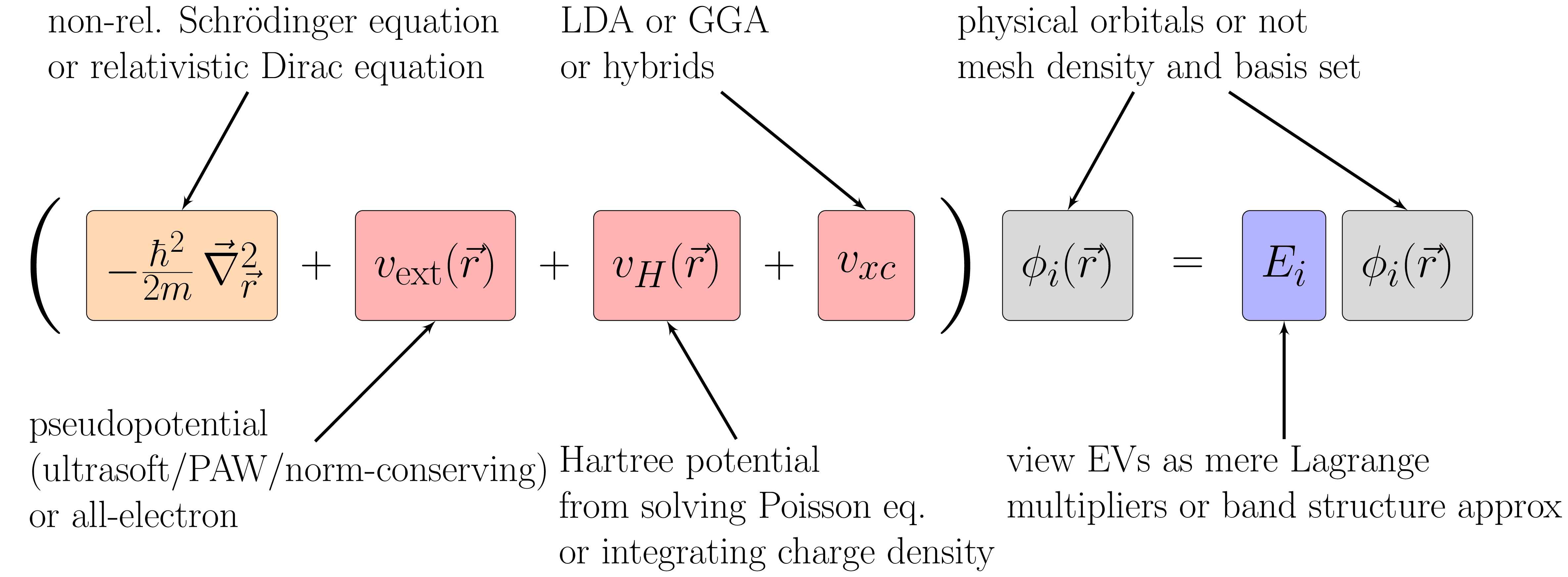DFT Choices
A diagram illustrating the various choices and components in density functional theory (DFT) calculations, including kinetic energy, external potential, Hartree potential, and exchange-correlation terms.

Download
Code
dft-choices.typ (151 lines)
dft-choices.tex (44 lines)